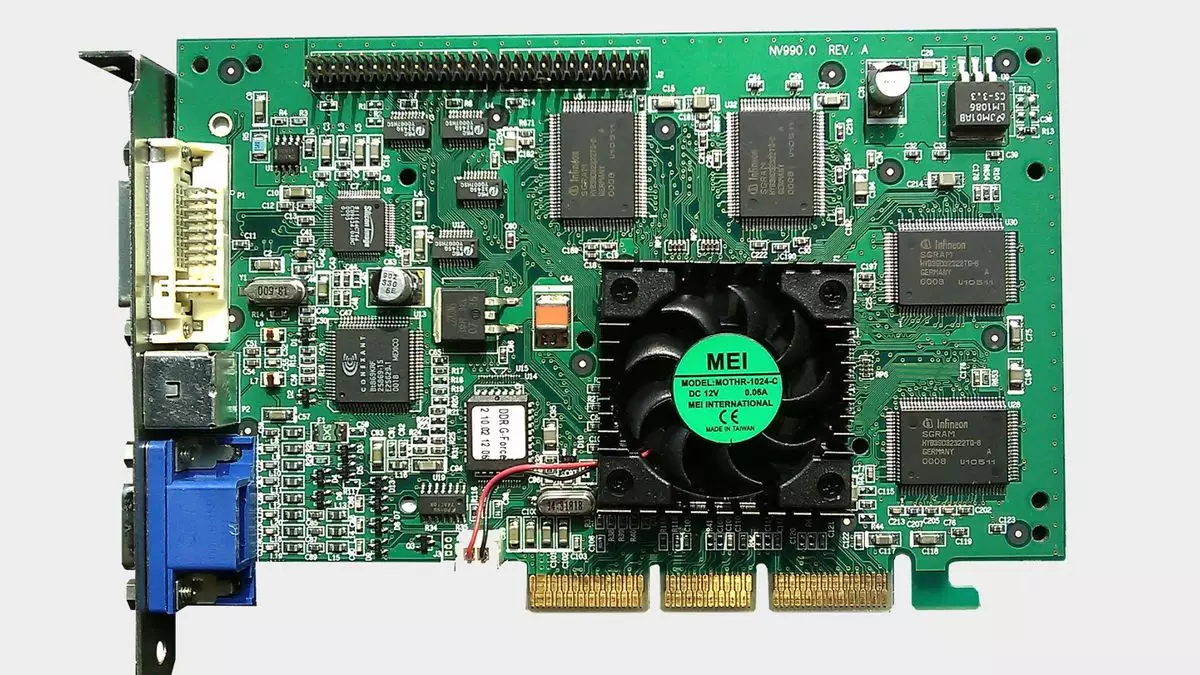As of October 11, 2024, we have officially reached the 25th anniversary of the Nvidia GeForce 256, a component that marked pivotal change in the gaming industry. Released in 1999, this graphics card was heralded as the first true Graphics Processing Unit (GPU), a claim that continues to spark discussions among tech enthusiasts and historians alike. While at first glance it may appear to be a mere relic of the past compared to today’s advanced models, the GeForce 256 laid the groundwork for a revolution in how games are rendered and experienced.
The term “GPU” is often debated; it is largely credited to Nvidia, though the original PlayStation’s 32-bit graphics processor had already donned the label from Sony. But irrespective of nomenclature disputes, there is no denying that the GeForce 256 represented a significant evolutionary step in gaming technology. It featured a modest 32 MB of RAM, which, at that time, felt revolutionary and represented a departure from the more rudimentary graphics solutions that preceded it.
Breaking down the GeForce 256’s specifications helps to clarify just how groundbreaking this card was. With a 120 MHz core clock speed paired with a 256-bit QuadPipe Rendering Engine, the device was equipped with four 64-bit pixel pipelines—capable of achieving a 480 Megapixels per second fill rate. This architecture not only accelerated rendering but also took hefty computational loads off the CPU predominantly managing these tasks in earlier video cards. The introduction of onboard hardware transform and lighting (T&L) marked a transformative shift, allowing developers to create ever more complex and visually stunning game environments.
It’s worth noting that while earlier technologies, such as the 3dfx Voodoo series, had started pushing the boundaries of what graphics cards could do, the GeForce 256 truly pioneered a dedicated graphic rendering capability that changed the landscape of gaming entirely.
The gaming environment of 1999 was incredibly vibrant, filled with titles that would go down in history. Notable releases included “Unreal Tournament” and “Quake III Arena,” both of which demanded the high-performance graphics capabilities that the GeForce 256 delivered. This was a time when LAN parties and multiplayer gaming were beginning to find their footing, a wave that the GeForce 256 was well-positioned to ride.
As the first card to efficiently handle T&L, the GeForce 256 made incredibly immersive 3D experiences possible, allowing developers to get creative with polygon counts and textures. It was a watershed moment in gaming—setting standards that would soon be completely rewritten yet again.
A Reflection of Progress
Looking back at the GeForce 256 also invites a broader reflection on the nearly incomprehensible leap in technology that has since occurred. Today’s GPUs, such as Nvidia’s RTX 4090, carry over 76 billion transistors—a stark contrast to the 17 million contained in the GeForce 256. With the modern cards boasting Terrifically Enhanced Ray Tracing capabilities and unprecedented power, this is a testament to the rapid evolution of GPU technology over just a quarter of a century.
Moreover, the GeForce 256 had a Thermal Design Power (TDP) rating of just 12-13 W—an unfathomably low power consumption compared to the modern specs. This current shift in power consumption and performance metrics illustrates how drastically the industry has morphed, evolving not just in performance but also in the sustainability of hardware.
While it may seem odd to reminisce over a 25-year-old graphics card, the nostalgia for the GeForce 256 is palpable. Many enthusiasts find remnants of that era stowed away in attics or storage spaces. Reviving outdated technology can evoke memories of gaming’s evolution and the joy it brought countless players. Embracing the history of these components can foster a deeper understanding of contemporary developments.
So, on this anniversary, perhaps it is fitting to raise a metaphorical toast to the GeForce 256. Its contribution to the gaming landscape is undeniable, and while advancements march ever forward, we’d do well to remember the innovations it sparked. After all, every modern GPU owes a legacy of progress to its pioneering ancestors—especially the GeForce 256, which truly ignited the GPU revolution.

